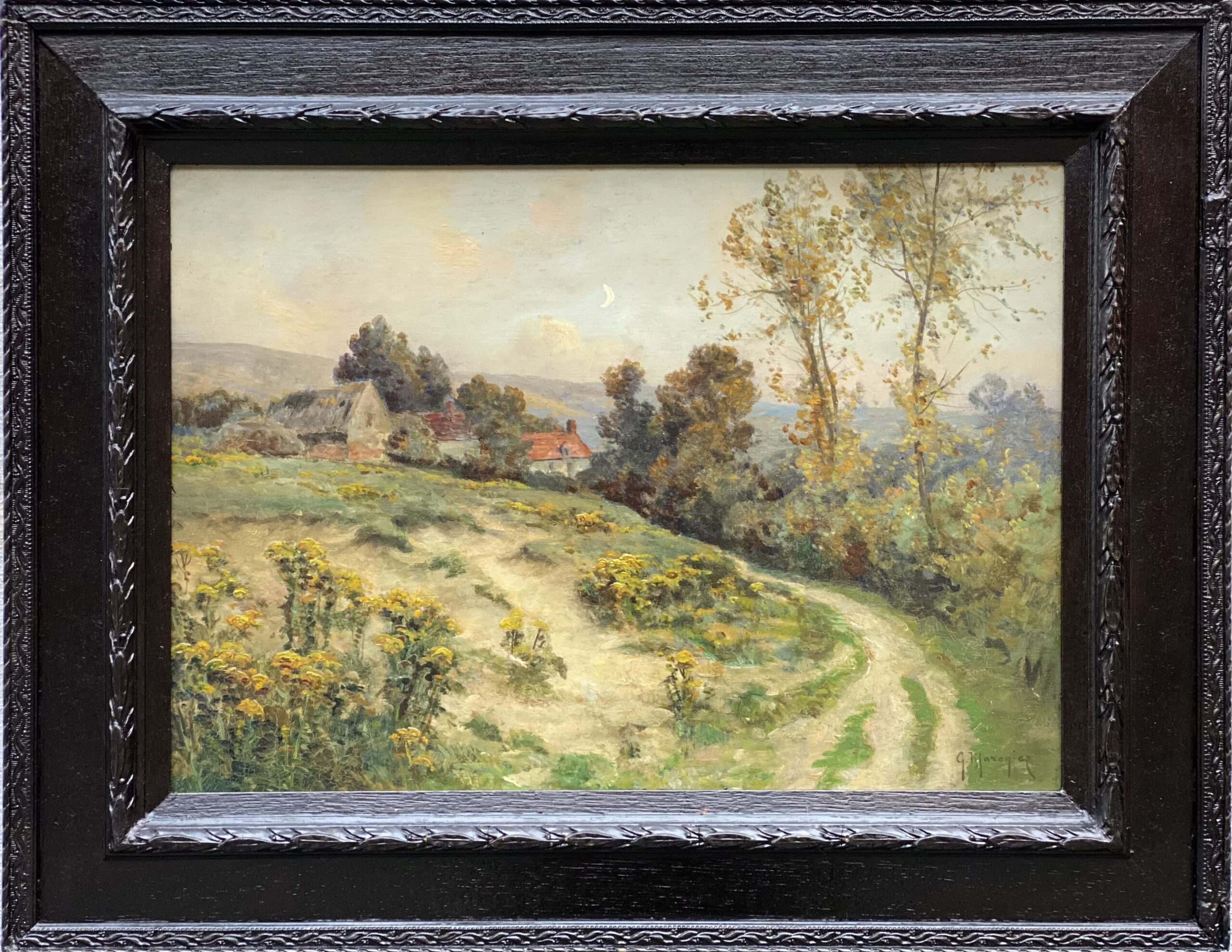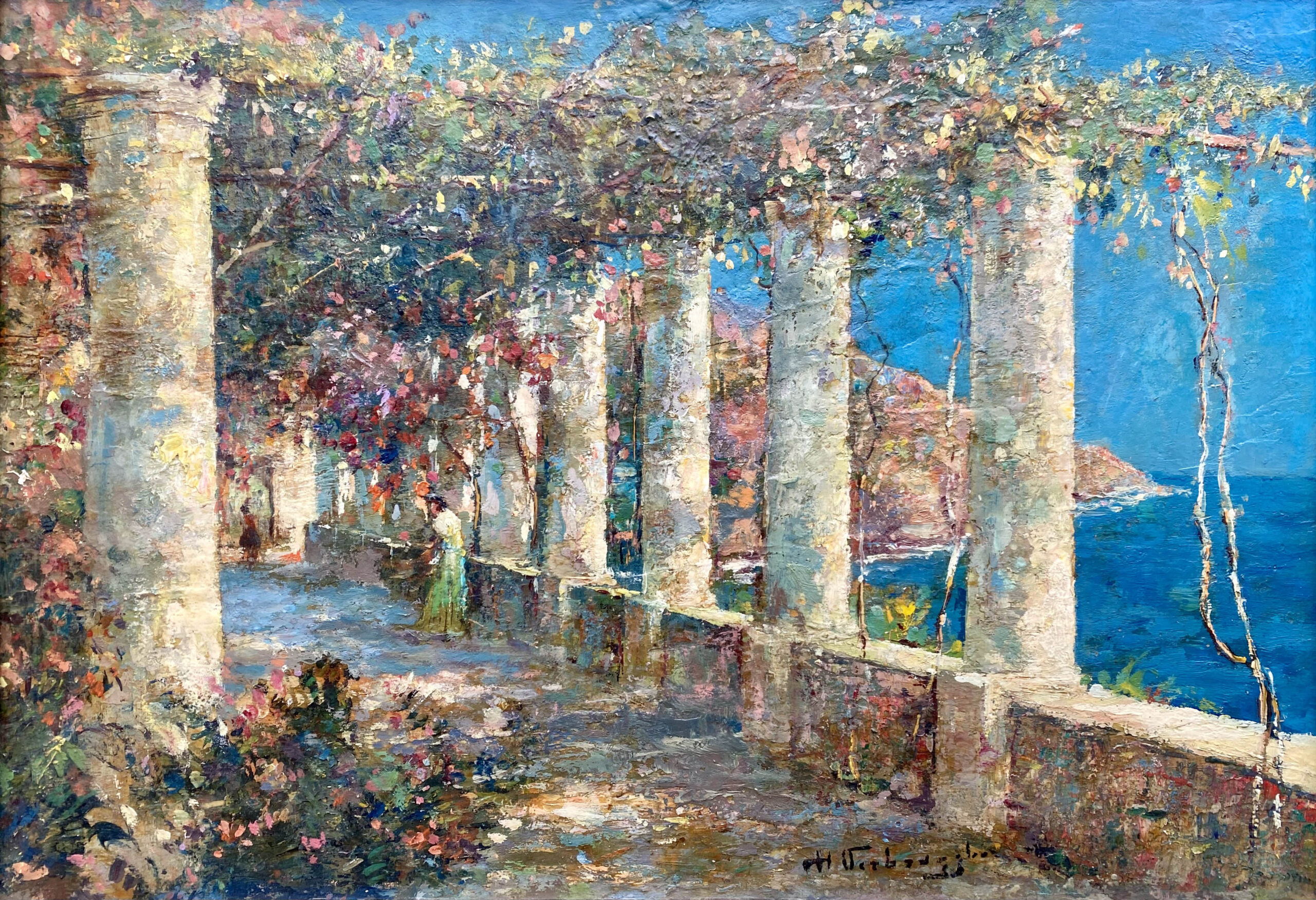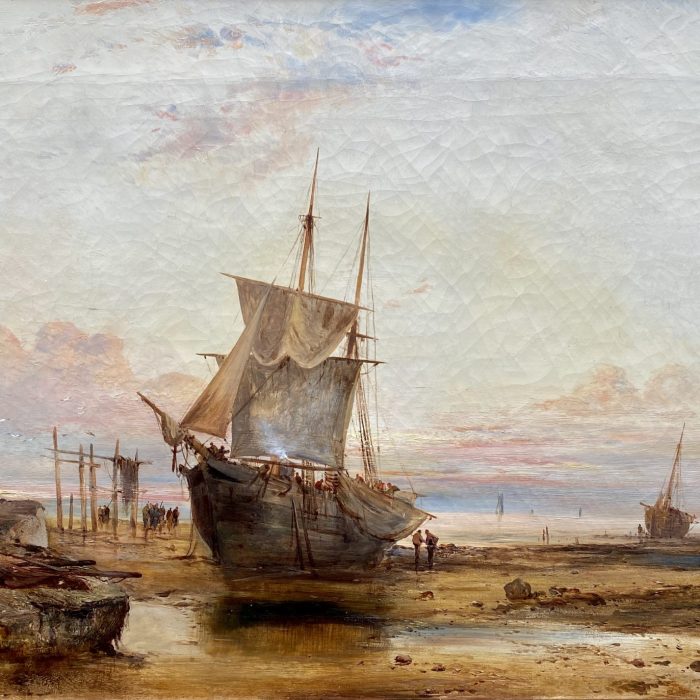Douai 1865 – 1933 Paris
French Painter
Country Road
Georges Philibert Charles Maroniez, born on January 17, 1865, in Douai, France, was a distinguished French painter celebrated for his mastery of genre scenes and landscapes, particularly his captivating depictions of the sea and the lives of fisherfolk. Raised in an environment where artistic talent flourished, Maroniez, the son of an industrialist, displayed an early affinity for art.
While pursuing legal studies, Maroniez also immersed himself in artistic education at the École des Beaux-Arts of Douai, studying under the guidance of Pierre Billet. His artistic journey took a significant turn when he became a student of the esteemed teachers and artists Mr. & Mrs. Demont-Breton, forming connections with the renowned painter Adrien Demont. At the age of 22, he commenced his exhibition career, showcasing peasant genre and landscape scenes in both Douai and Paris.
Maroniez’s success soared as he exhibited at the Salon des Artistes Français, ultimately gaining full membership in 1889. The Salon bestowed upon him various accolades, including an honorable mention and a third-place medal in 1891, as well as a second-place medal in 1906.
In addition to his prowess in painting, Maroniez ventured into photography, capturing over 1,600 images during his extensive travels through the Mediterranean, North Africa, and the Middle East. His photographic collection now resides in the museum in Cambrai. In 1905, propelled by the success of his paintings, Maroniez made the bold decision to resign from the judiciary and fully devote himself to art.
Maroniez’s art defied easy categorization, as he transcended the label of a mere “marine painter.” Infusing his genre scenes with Flemish realism, he used luminous and caressing light to transform the grey country roads of his birthplace into vibrant, powerful landscapes. His oeuvre encompassed ports in Brittany, France, Belgium, and the Netherlands, capturing the essence of fisherman’s life, especially during twilight or night. The magnetic beauty of ocean sunsets and the tranquility emanating from his works became his signature.
August 1914 marked a significant juncture in Maroniez’s life when he was drafted into Military Justice. In 1918, his exceptional contributions earned him the distinction of being created a Knight of the Légion d’Honneur. The tumultuous years of the German occupation saw Maroniez’s studio looted, and his wife deported to Holzminden internment camp in Lower Saxony. The family reunited post-ceasefire, relocating to Paris in 1919. Despite the challenges, Maroniez continued drawing inspiration from Brittany, producing a prolific body of work.
Maroniez’s artistic career was marked by popularity. He passed away on December 11, 1933, in Paris, leaving behind a legacy that endures through his captivating artworks, displayed in private and public collections, including museums in Lille, Cambrai, Douai, Boulogne (France), and Valencia (Spain).






